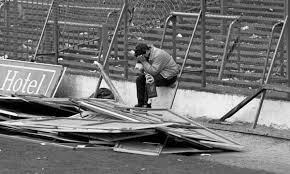The Hillsborough Disaster: A Turning Point in Football Safety

Introduction to the Hillsborough Disaster
The Hillsborough Disaster, which occurred on 15 April 1989, remains one of the darkest days in British sports history. The tragedy, which resulted from overcrowding during an FA Cup semi-final match between Liverpool and Nottingham Forest at Hillsborough Stadium in Sheffield, claimed the lives of 96 Liverpool fans and injured over 700 others. This devastating incident not only shaped public perception of football safety but also led to significant changes in crowd management and stadium infrastructure.
Details of the Incident
On that fateful day, as fans poured into the stadium, a series of critical failures in crowd control and police management led to a catastrophic crush in the Leppings Lane stand. The gates were opened to relieve overcrowding outside, but this action inadvertently worsened the situation, as thousands of fans surged into the already packed enclosure. Emergency services faced challenges, and many victims were subjected to inadequate care in the immediate aftermath.
The Aftermath and Legal Proceedings
In the wake of the disaster, there was a prolonged campaign for justice by the victims’ families, who sought accountability and transparency regarding the police response and subsequent cover-up attempts. An independent inquiry was launched, leading to the Hillsborough Inquiry, which ultimately revealed systemic failures. Reports indicated that police documentation had been altered to deflect blame from authorities. In 2016, an inquest ruled that the 96 victims were unlawfully killed, reaffirming the call for justice.
Impact on Football Safety Regulations
The implications of the Hillsborough Disaster extended far beyond the immediate tragedy. It prompted a review of stadium safety regulations, leading to the Taylor Report published in 1990. This report advocated for the introduction of all-seater stadiums and improved safety measures at football matches. The recommendations considerably changed the landscape of football in the UK, making it safer for spectators and ensuring that such an incident would not be repeated.
Conclusion: Remembering Hillsborough
The Hillsborough Disaster stands as a poignant reminder of the importance of safety in sporting venues and the need for accountability among authorities. The continuing remembrance and advocacy by the victims’ families and fans play a crucial role in ensuring that lessons are learned from this tragic event. As we reflect on the 34th anniversary of the disaster in 2023, it’s crucial to honour the memories of those affected and pledge to uphold safety standards in sports to prevent any similar catastrophes in the future.









